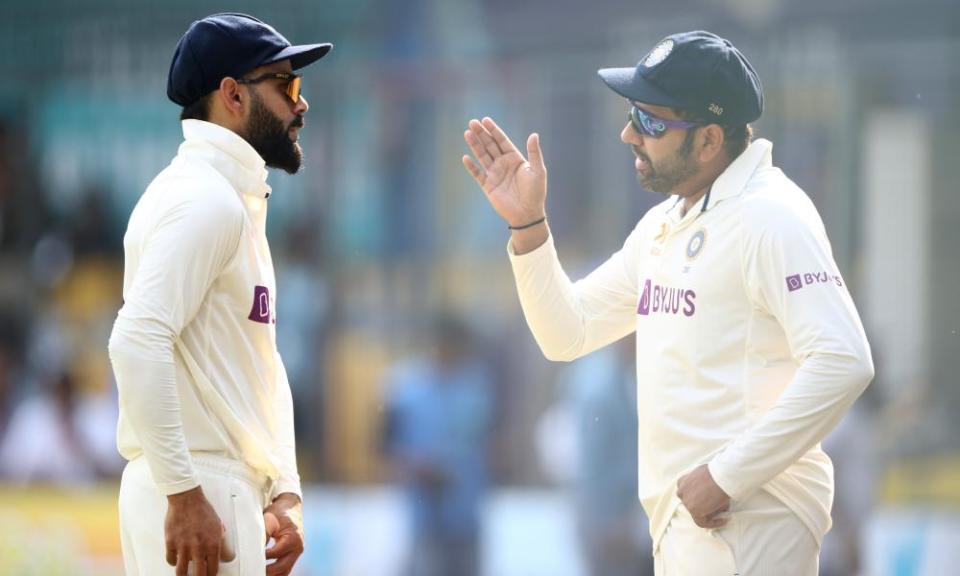India should put anomaly behind them and resume normal service in fourth Test

If you believed some Indian media coverage or supporters online, you would think that the home team is on the brink of disaster. After losing the third Border-Gavaskar Trophy match in Indore, criticisms have flowed: that the batting is broken, that no one can play spin any more, that the lower order papers over the cracks, that India’s spinners are no good after failing to bowl out Australia for 70, and especially that the preparation of turning pitches was a disaster waiting to happen, a tiger pit that India dug and then fell into themselves.
That’s an extensive list of diagnoses for a team that is leading the series 2-1, and has now lost a total of three home Tests in the last decade. A team that came back to win both series after the first two of those losses, and will most likely go on to win the current one. There is consternation about how India might fare in the fourth Test in Ahmedabad, and scolding about the dangers of shootout pitches – that is, surfaces where batting is so difficult that luck plays a greater part than skill. But the weight of statistical probability says that with the scales so sharply tilted by home advantage, home concern is unwarranted.
Related: How Australia’s Travis Head broke batting spell – and India hearts | Geoff Lemon
The only thing that could hamper India would be if they psych themselves out in preparation. After the Indore loss, Rohit Sharma complained about all the attention on surfaces. “Every time we play in India, there’s only focus on the pitch. Why are people not asking me about Nathan Lyon, how well he bowled, how well [Cheteshwar] Pujara batted in the second innings, how well Usman Khawaja played?”
The thing is, objecting to media focus makes no sense when Indian captains and coaches put such focus on pitches themselves. Australians at home show up to the ground and pick a team for whatever they are given. Indian team preparation includes deciding what kind of surface they want to play on. Making wickets is an inexact art, but those running the team place an order and those running the mower try to fill it. This is a different world, one where the Indian board has centrally employed curators going match to match wearing team training kit, and coach Rahul Dravid spends lunch on day one with them examining the strip of dirt in the middle, presumably conveying his displeasure at the fact that seven of his players had already been dismissed.
The consequence is that when an Indian team plays badly on a surface, the surface becomes one of the mistakes for which they are liable. That might make a captain second-guess himself. Does he ask for the fourth Test to be similar to the third, and risk a repeat of being the team with the worse collapse? Does he ask for a batting pitch and rely on his players to prevail over a full-length contest? The Australian model of divested responsibility might start to look appealing.
Really, though, it shouldn’t matter what option they go for. The sample size of Indian dominance at home – one that you can extend to show nine losses in nearly 20 years dating back to Australia’s last series win here in 2004 – shows that they win in all kinds of home conditions. That might be making 600 on flat tracks or 150 on minefields. Even in a shootout, home players are more likely to be able to use extreme conditions to their advantage. It might fall the other way occasionally but those will be the anomalies.
One thing is true, which is that India’s historical brilliance against spin has dimmed. Someone like VVS Laxman on a turning track was a different level. Current players have little domestic first-class cricket once they graduate to national white-ball teams, aside from specialists like Pujara. With 38 Ranji Trophy teams, domestic games are a mixed bag of quality – there’s a reason that five players from this series and four recent omissions all have first-class triple centuries. But there are also some rough tracks to school players in handling turn.
Lacking that experience is a modern reality. At the same time, it is true that India’s players still have more experience in these conditions than anyone who visits them. They host multiple series a year. If Peter Handscomb can hang onto advances in his technique over six years between tours, India’s players can bridge six months. Recent years of batting returns have declined in raw numbers but on more difficult pitches they have kept outscoring their opponents. They should do the same in Ahmedabad. They should put the anomaly behind them and revert to the mean. Probability is all going one way. Not that you would know it from the conversation.

 Yahoo Sport
Yahoo Sport 



































































